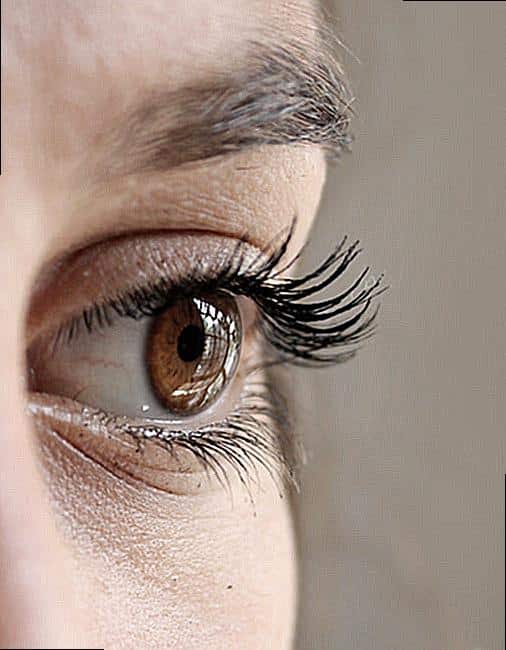Antihistamine eye drops are a popular form of eye medication that is used to treat certain eye conditions. These eye drops are formulated to relieve symptoms of allergies, such as redness, itching, and watery eyes. They are also used to treat other eye conditions, such as conjunctivitis and dry eyes.
Antihistamine eye drops work by blocking the effects of histamine in the body. Histamine is a chemical compound that is released by the body’s immune system in response to allergens, such as pollen, dust, and pet dander. When histamine is released in the eyes, it causes various symptoms, including watery eyes, itching, and redness.
Antihistamine eye drops contain an active ingredient that blocks the histamine receptors in the eyes, preventing histamine from causing these symptoms. The drops are available in various forms, such as prescription and over-the-counter (OTC) formulations. OTC antihistamine eye drops can be purchased without a prescription at pharmacies and drug stores, whereas prescription eye drops require a doctor’s approval.
Overall, antihistamine eye drops are a highly effective treatment option for relieving allergy symptoms in the eyes. They are safe to use and generally do not cause any side effects. However, it is recommended to consult a doctor before using any type of eye drops, especially if you have an underlying medical condition, such as glaucoma or diabetes.
What Are Antihistamine Eye Drops?
Antihistamine eye drops are a type of medication designed to reduce the symptoms of allergies that affect the eyes. These symptoms can include itchiness, swelling, redness, watery eyes, and sensitivity to light. Antihistamine eye drops work by blocking the effects of histamine, a chemical produced by the body in response to allergens such as pollen, pet dander, and dust mites. By inhibiting the actions of histamine, antihistamine eye drops can alleviate the signs of inflammation and irritation in the eyes that occur during an allergic reaction.
How Do Antihistamine Eye Drops Work?
Antihistamine eye drops work by blocking the H1 receptors in the body that are activated by histamine. When allergens such as pollen come into contact with the eyes, they trigger the release of histamine, causing inflammation and other symptoms associated with allergies. Antihistamine eye drops bind to the H1 receptors and inhibit the activity of histamine. This process prevents the inflammation and other symptoms from occurring, providing relief to the patient.
What Are The Common Uses Of Antihistamine Eye Drops?
Antihistamine eye drops are commonly used to treat eye allergies caused by environmental allergens. These can include pollen, dust, pet dander, and mold. Antihistamine eye drops may also be used to alleviate the symptoms of other eye conditions like conjunctivitis or pink eye, but only if the underlying cause is an allergy. These eye drops are not effective for infections or other types of eye issues that are unrelated to allergies.
What Are The Side Effects Of Antihistamine Eye Drops?
The most common side effects associated with antihistamine eye drops include stinging, burning, or itching of the eyes after application. Some people may also experience dry eyes, watering, redness, or blurred vision. In rare cases, antihistamine eye drops can cause more serious side effects such as increased intraocular pressure or glaucoma. If you have any concerns about using antihistamine eye drops, you should consult your doctor or pharmacist before use.
How Effective Are Antihistamine Eye Drops?
Antihistamine eye drops are generally considered effective in providing relief from the symptoms of eye allergies. However, their effectiveness may vary depending on the severity of the allergy and the individual response. Some people may find relief from their symptoms after just one or two applications, while others may need to use the drops for several days or weeks before seeing improvement. It is important to follow the recommended dosage instructions and consult your doctor if your symptoms do not improve or worsen over time.
Are Antihistamine Eye Drops Safe To Use For Children?
Antihistamine eye drops are generally considered safe for use in children. However, like with any medication, it is best to consult a pediatrician before administering antihistamine eye drops to children. Children may be more sensitive to the side effects of the medication, and the dosage may need to be adjusted accordingly.
What Is The Recommended Dosage Of Antihistamine Eye Drops For Adults?
The recommended dosage of antihistamine eye drops for adults may vary depending on the specific product being used. Generally, it is recommended to apply one or two drops into each affected eye up to four times per day, or as directed by a doctor or pharmacist. It is important to follow the instructions on the label carefully, as overuse of antihistamine eye drops can cause adverse effects like dry eyes or eye irritation.
Can Antihistamine Eye Drops Be Used While Wearing Contact Lenses?
Many antihistamine eye drops are safe to use while wearing contact lenses. However, it is important to consult a doctor or pharmacist before using any eye drops while wearing contacts. Some types of eye drops may contain preservatives or other ingredients that can damage or discolor contact lenses. Additionally, eye drops may alter the pH or other properties of the tear film, which can affect the fit and comfort of contact lenses.
What Is The Difference Between Prescription And Over-The-Counter Antihistamine Eye Drops?

Prescription antihistamine eye drops are typically stronger and more targeted in their action compared to over-the-counter options. Prescription eye drops may include corticosteroids or other medications to provide more potent and long-lasting relief from allergy symptoms. Over-the-counter antihistamine eye drops are generally milder and may be suitable for mild to moderate allergies or for use as a preventive measure during allergy season.
How Long Can I Use Antihistamine Eye Drops For?
The length of time that antihistamine eye drops can be used for depends on the specific product and the severity of the allergy. Generally, antihistamine eye drops can be used for up to two weeks, but longer-term use may be necessary in some cases. It is important to follow the instructions on the product label and consult a doctor if symptoms persist or worsen over time.
What Are Some Of The Best Antihistamine Eye Drop Brands Available On The Market?
Some of the best antihistamine eye drop brands available on the market include Zaditor, Alaway, and Patanol, among others. These brands are known for their effectiveness in treating eye allergies and for their fast-acting, long-lasting relief. However, the best brand for you will depend on your individual needs and preferences, as well as on the specific symptoms and severity of your allergies. It is best to consult a doctor or pharmacist before trying a new eye drop brand or product.
How Can I Apply Antihistamine Eye Drops Effectively?

To apply antihistamine eye drops effectively, it is important to first wash your hands thoroughly with soap and water. Remove the cap from the drop bottle and either tilt your head back or lie down with your eyes closed. Use one hand to pull down your lower eyelid, creating a small pocket between your eyelid and your eye. With your other hand, hold the drop bottle close to your eye and gently squeeze one or two drops into the pocket. Release your eyelid slowly and blink a few times to allow the drops to spread evenly over the surface of your eye. Repeat as necessary with the other eye, and be sure to replace the cap on the bottle after use.
Conclusion
In conclusion, antihistamine eye drops are an effective solution for those who suffer from allergies or other eye allergic reactions. These eye drops are designed to alleviate the symptoms associated with allergies, such as itching, redness, and swelling in the eyes.
Antihistamine eye drops work by blocking histamines, which are chemicals that are responsible for allergic reactions in the body. This helps to reduce the symptoms of allergies and provide relief for those who suffer from them.
There are several types of antihistamine eye drops available on the market. Some are available over-the-counter, while others require a prescription. It is important to speak with a healthcare professional before using any type of medication to determine the best option for your individual needs.

Overall, antihistamine eye drops are safe and effective when used as directed. They provide relief for those who suffer from allergies, and are a convenient and easy-to-use solution for managing symptoms of eye allergic reactions.
"}},{"@type": "Question", "name": "How Do Antihistamine Eye Drops Work?","acceptedAnswer": {"@type": "Answer","text": "Antihistamine eye drops work by blocking the H1 receptors in the body that are activated by histamine. When allergens such as pollen come into contact with the eyes, they trigger the release of histamine, causing inflammation and other symptoms associated with allergies. Antihistamine eye drops bind to the H1 receptors and inhibit the activity of histamine. This process prevents the inflammation and other symptoms from occurring, providing relief to the patient.
"}},{"@type": "Question", "name": "What Are The Common Uses Of Antihistamine Eye Drops?","acceptedAnswer": {"@type": "Answer","text": "Antihistamine eye drops are commonly used to treat eye allergies caused by environmental allergens. These can include pollen, dust, pet dander, and mold. Antihistamine eye drops may also be used to alleviate the symptoms of other eye conditions like conjunctivitis or pink eye, but only if the underlying cause is an allergy. These eye drops are not effective for infections or other types of eye issues that are unrelated to allergies.
"}},{"@type": "Question", "name": "What Are The Side Effects Of Antihistamine Eye Drops?","acceptedAnswer": {"@type": "Answer","text": "
The most common side effects associated with antihistamine eye drops include stinging, burning, or itching of the eyes after application. Some people may also experience dry eyes, watering, redness, or blurred vision. In rare cases, antihistamine eye drops can cause more serious side effects such as increased intraocular pressure or glaucoma. If you have any concerns about using antihistamine eye drops, you should consult your doctor or pharmacist before use.
"}},{"@type": "Question", "name": "How Effective Are Antihistamine Eye Drops?","acceptedAnswer": {"@type": "Answer","text": "
Antihistamine eye drops are generally considered effective in providing relief from the symptoms of eye allergies. However, their effectiveness may vary depending on the severity of the allergy and the individual response. Some people may find relief from their symptoms after just one or two applications, while others may need to use the drops for several days or weeks before seeing improvement. It is important to follow the recommended dosage instructions and consult your doctor if your symptoms do not improve or worsen over time.
"}},{"@type": "Question", "name": "Are Antihistamine Eye Drops Safe To Use For Children?","acceptedAnswer": {"@type": "Answer","text": "Antihistamine eye drops are generally considered safe for use in children. However, like with any medication, it is best to consult a pediatrician before administering antihistamine eye drops to children. Children may be more sensitive to the side effects of the medication, and the dosage may need to be adjusted accordingly.
"}},{"@type": "Question", "name": "What Is The Recommended Dosage Of Antihistamine Eye Drops For Adults?","acceptedAnswer": {"@type": "Answer","text": "The recommended dosage of antihistamine eye drops for adults may vary depending on the specific product being used. Generally, it is recommended to apply one or two drops into each affected eye up to four times per day, or as directed by a doctor or pharmacist. It is important to follow the instructions on the label carefully, as overuse of antihistamine eye drops can cause adverse effects like dry eyes or eye irritation.
"}},{"@type": "Question", "name": "Can Antihistamine Eye Drops Be Used While Wearing Contact Lenses?","acceptedAnswer": {"@type": "Answer","text": "Many antihistamine eye drops are safe to use while wearing contact lenses. However, it is important to consult a doctor or pharmacist before using any eye drops while wearing contacts. Some types of eye drops may contain preservatives or other ingredients that can damage or discolor contact lenses. Additionally, eye drops may alter the pH or other properties of the tear film, which can affect the fit and comfort of contact lenses.
"}},{"@type": "Question", "name": "What Is The Difference Between Prescription And Over-The-Counter Antihistamine Eye Drops?","acceptedAnswer": {"@type": "Answer","text": "
Prescription antihistamine eye drops are typically stronger and more targeted in their action compared to over-the-counter options. Prescription eye drops may include corticosteroids or other medications to provide more potent and long-lasting relief from allergy symptoms. Over-the-counter antihistamine eye drops are generally milder and may be suitable for mild to moderate allergies or for use as a preventive measure during allergy season.
"}},{"@type": "Question", "name": "How Long Can I Use Antihistamine Eye Drops For?","acceptedAnswer": {"@type": "Answer","text": "The length of time that antihistamine eye drops can be used for depends on the specific product and the severity of the allergy. Generally, antihistamine eye drops can be used for up to two weeks, but longer-term use may be necessary in some cases. It is important to follow the instructions on the product label and consult a doctor if symptoms persist or worsen over time.
"}},{"@type": "Question", "name": "What Are Some Of The Best Antihistamine Eye Drop Brands Available On The Market?","acceptedAnswer": {"@type": "Answer","text": "Some of the best antihistamine eye drop brands available on the market include Zaditor, Alaway, and Patanol, among others. These brands are known for their effectiveness in treating eye allergies and for their fast-acting, long-lasting relief. However, the best brand for you will depend on your individual needs and preferences, as well as on the specific symptoms and severity of your allergies. It is best to consult a doctor or pharmacist before trying a new eye drop brand or product.
"}},{"@type": "Question", "name": "How Can I Apply Antihistamine Eye Drops Effectively?","acceptedAnswer": {"@type": "Answer","text": "
To apply antihistamine eye drops effectively, it is important to first wash your hands thoroughly with soap and water. Remove the cap from the drop bottle and either tilt your head back or lie down with your eyes closed. Use one hand to pull down your lower eyelid, creating a small pocket between your eyelid and your eye. With your other hand, hold the drop bottle close to your eye and gently squeeze one or two drops into the pocket. Release your eyelid slowly and blink a few times to allow the drops to spread evenly over the surface of your eye. Repeat as necessary with the other eye, and be sure to replace the cap on the bottle after use.
"}},{"@type": "Question", "name": "Conclusion","acceptedAnswer": {"@type": "Answer","text": "In conclusion, antihistamine eye drops are an effective solution for those who suffer from allergies or other eye allergic reactions. These eye drops are designed to alleviate the symptoms associated with allergies, such as itching, redness, and swelling in the eyes.
Antihistamine eye drops work by blocking histamines, which are chemicals that are responsible for allergic reactions in the body. This helps to reduce the symptoms of allergies and provide relief for those who suffer from them.
There are several types of antihistamine eye drops available on the market. Some are available over-the-counter, while others require a prescription. It is important to speak with a healthcare professional before using any type of medication to determine the best option for your individual needs.
Overall, antihistamine eye drops are safe and effective when used as directed. They provide relief for those who suffer from allergies, and are a convenient and easy-to-use solution for managing symptoms of eye allergic reactions. "}}]}



